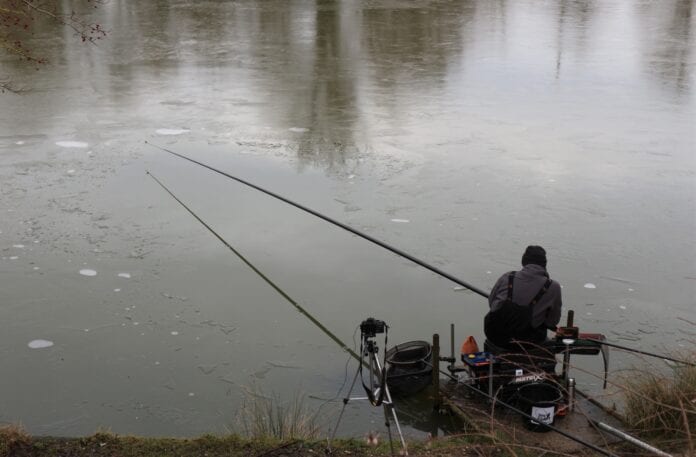ICE AGE
Rivers were flooded and stillwaters frozen, wonderful! But as always, my angling pal Dave Eastwood was as keen as ever, even though he had just noisily smashed a big hole in the iced-up lake. I thought we must both be bonkers, but amazingly there were also a couple of carpers and a pike angler on the water. The speccy guys used a rowing boat and oars to smash their way through, while we had a sledgehammer head attached to a short chain and long rope. This brought back memories of a match I fished many moons ago on the Oxford Canal, under similar wintry conditions. The ice had been thicker that day, and we had all worked up a sweat breaking out swims, which took ages. When the event started, some daft boater opened a nearby lock. To our horror we all sat watching as the ice holes shifted several metres down the cut, stopping exactly halfway between each competitor. It took a long time to sort that mess out! Hopefully, things would be less complicated this time.
BASIC APPROACH
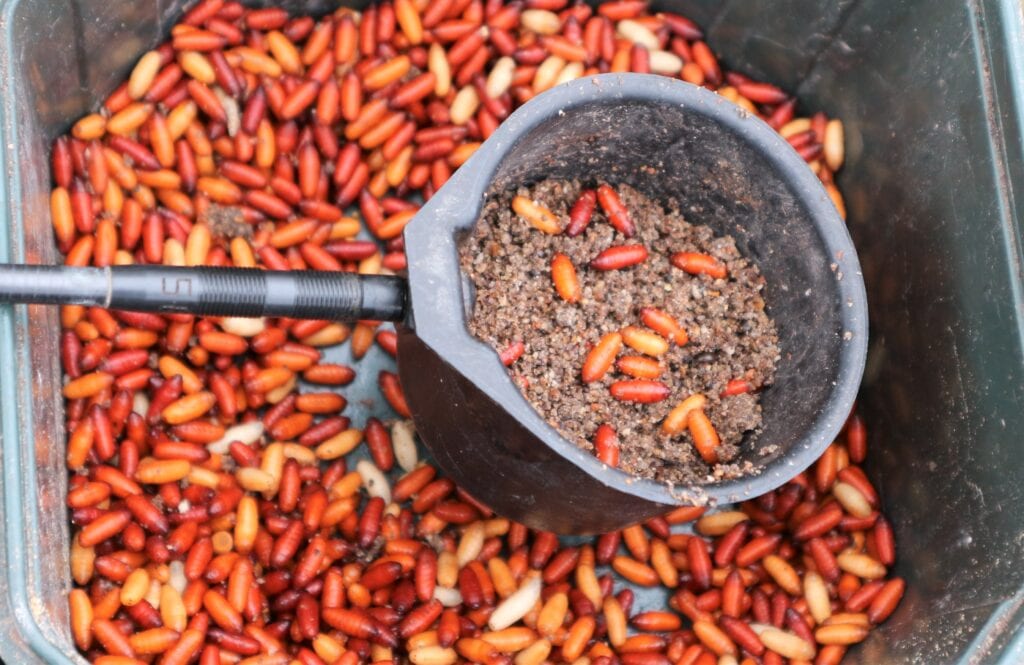

After all the commotion I wasn’t expecting anything to happen quickly, deciding to keep things as simple as possible. I had set up just one full depth pole rig, cupping loose groundbait and a few casters into ten feet of water. This gently, gently approach has worked for me many times when the going was expected to be tough. The plan then was to dink in tiny amounts of casters over the top, at around eight metres, which was at the bottom of the nearside shelf. If things went okay, I would occasionally top up with more loose groundbait, which gives a nice fish-attracting cloud effect. I was surprised when my 0.75g float sailed under first put in. It was one of those strange ghost bites that happen a lot in cold water. Still a good sign that there were some fish about. It only took a few minutes more and I was catching small roach, on a single red maggot to begin with. Nothing was happening in Dave’s swim, but he had put in hard balls of feed. I told him to try clouding it.
SURPRISE ACTION
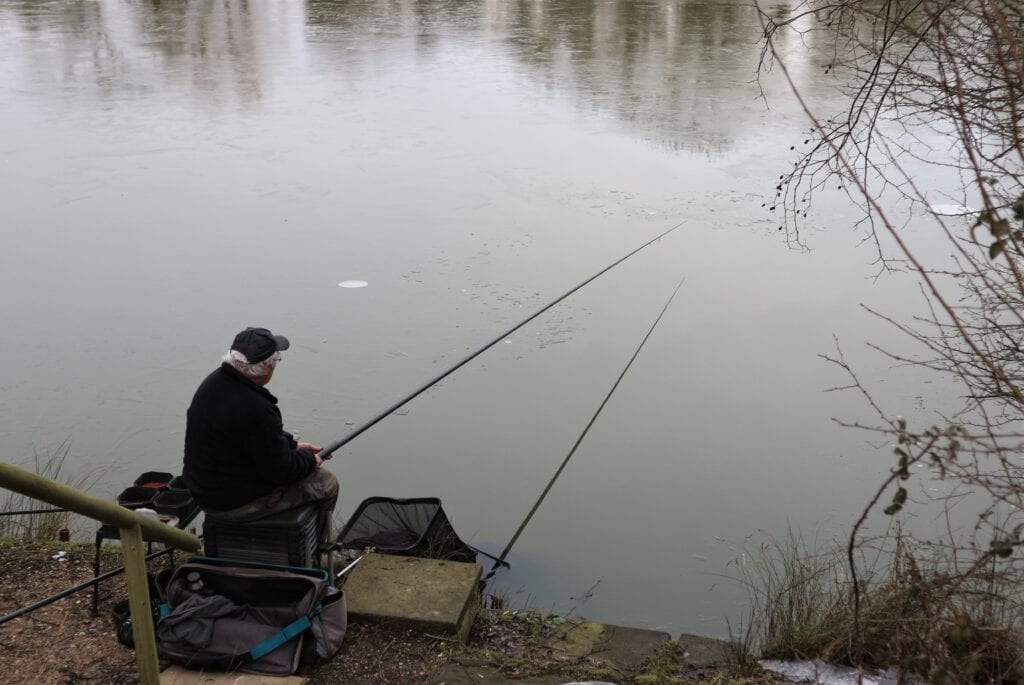

As sometimes happens in the depths of winter, after you get over the initial apprehension while scraping the frost off your car, and some feeling returns to your hands, it is possible to enjoy good fishing under adverse weather conditions. This was turning into one of those better sessions. The fish were responding, so I started feeding cloudy groundbait more regularly, to try and keep them stirred up, along with a constant trickle of casters. I began to catch chunkier roach on single shells, finding maggots were pulling smaller fish and causing missed bites. The pike angler to my right caught a jack down the margins, but the carp guys (who had by this time cleared the ice from nearly a third of the lake!) were not getting any response. Dave was catching too now, after switching to loose groundbait. He was using the uniquely-named Teddy Fisher gear, which is made in Stoke-on-Trent. It’s a nice product, especially at this time of the year, not having any fishmeal content.
NICE RESULT
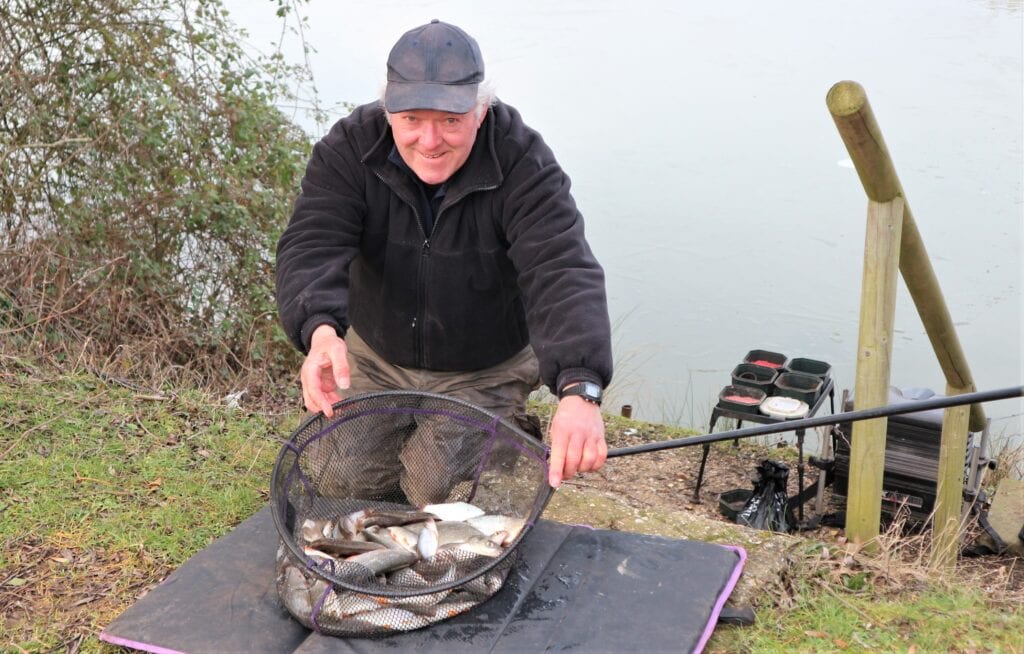

Resisting the temptation to go into a more attacking mode, my careful feeding built the swim up to almost a bite every put in. I enjoyed the odd elastic-stretcher on my light pole rig, with odd roach to 10oz, but mainly what we call “stamp fish” in match angling jargon (3-6oz weight builders). The cold snap had killed my worms, otherwise I would have tried chopping a few into my groundbait mix by the halfway stage of the session. Instead, I had fed a few red pinkies, along with experimenting with a couple on my hook. A hand-sized skimmer resulted, but then smaller roach and a tiny rudd persuaded me to go back on caster. A one-pound bonus skimmer turned out to be my best fish. For the rest of the session I stuck it out with single shells, staying busy to the end. I reckoned I had close to double figures. Dave caught well the last couple of hours too, bumping one big fish on worm, which he suspected was a decent perch. With all the action I didn’t feel the cold at all.
NO SURRENDER
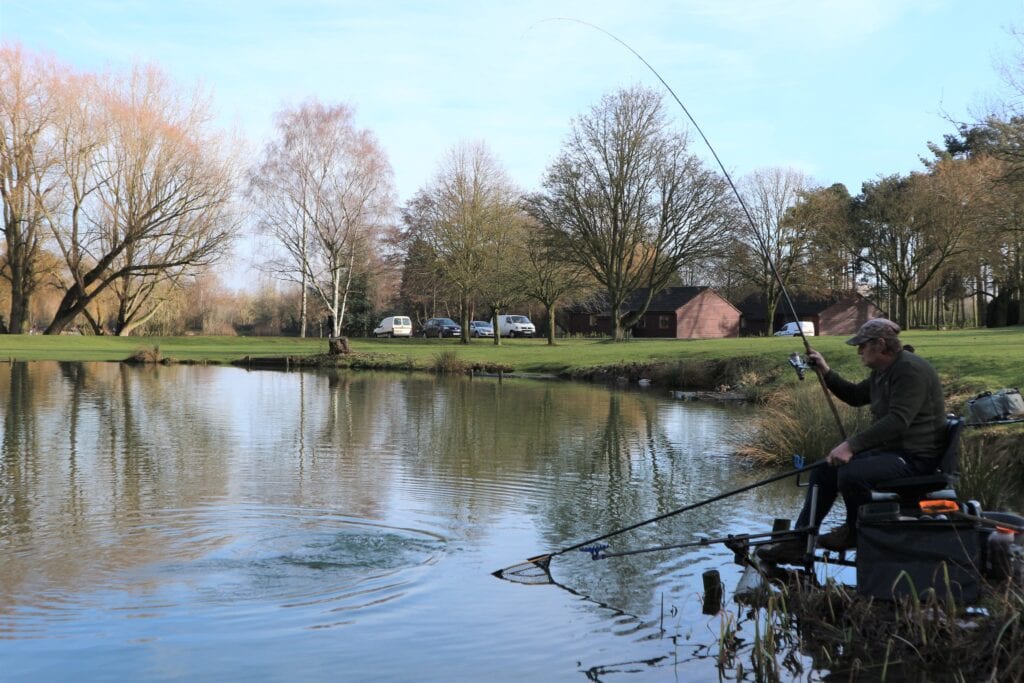

The big freeze just went on and on, but I had to get out on the bank. I sent a text to my mate Pete the bailiff, and he told me he was running some extra water into the small Carp Lake at Woodies, to try and thaw it out. We met up the next day and the ice had cleared. Pete attacked a small island with a hybrid feeder, targeting the bigger skimmers and carp population. I fished into the open water, looking for the numerous silvers this shallow place holds. I hadn’t fished bread for ages, so I had gone armed with a few slices and some punch crumb, thinking this might be a good way of finding fish in the extreme cold. It turned out to be a good move. I got bites straight from the off, catching loads of hand-sized skimmers and some half-decent roach. Meanwhile, Pete enjoyed plenty of action, cranking in the odd surprised skimmer, also connecting with some lively carp. Having a well-sheltered, ice-free lake like this was a godsend in the bitingly cold arctic winds.
BACK TO BREAD
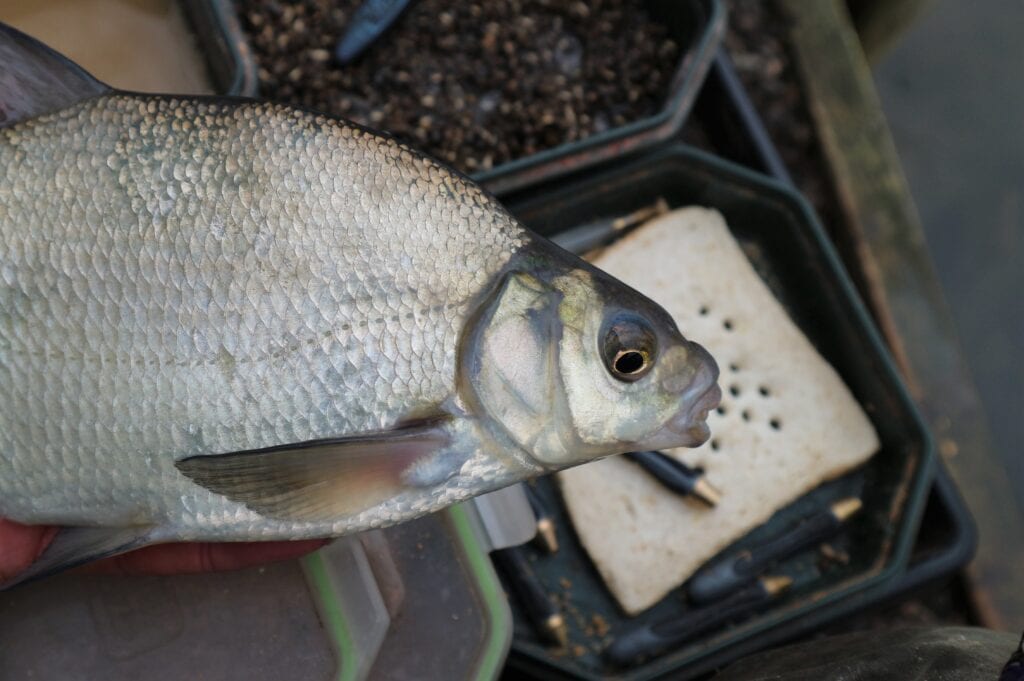

Although I was catching on punched bread, it took me a while to get properly in the swing of this way of fishing, which has become an art form for many match anglers. To begin with, I had problems with the white stuff getting stuck inside my treasured old punches, before I recalled that it helps to flatten the slices down before compressing the small pellets. Then I started getting troubled by small fish, so I upped the punch size, having to wait longer for a bite, but the next fish was a better one. The skimmers got bigger, and when I remembered the popular old trick of loose feeding some hemp over the top of my crumb groundbait, the size of the roach went up too. I tried hemp on the hook and missed a bite straight away. I had a handful of tares with me and tried one of these seeds on the hook, to my amazement catching a decent roach straight away. But the bigger skimmers were busy fizzing bubbles, so I went back on a larger punch size and caught the best one so far.
FOOD FOR THOUGHT
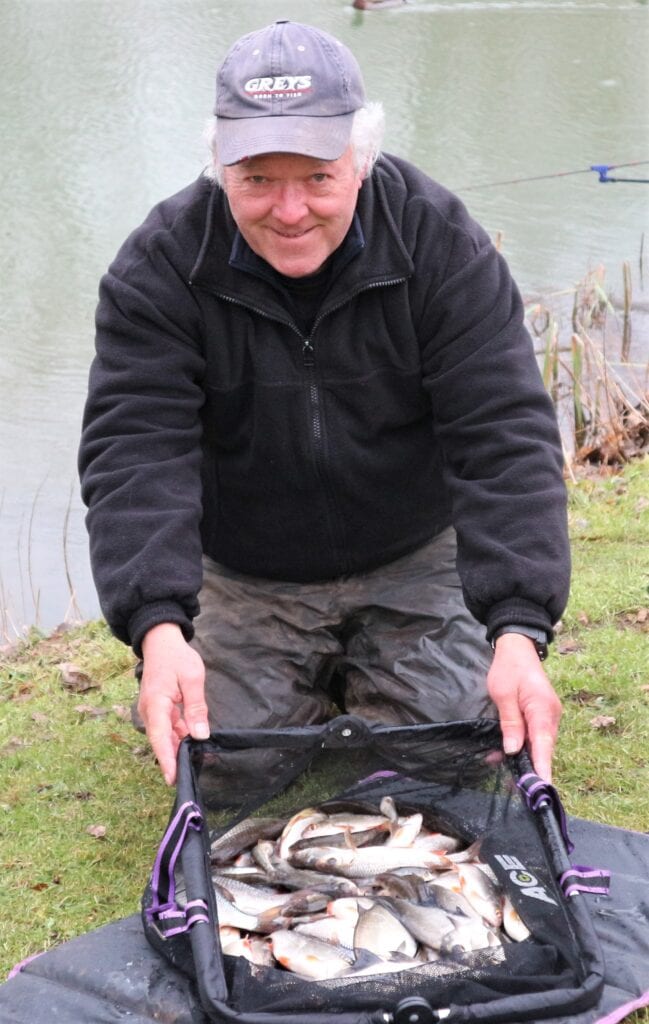

It had been too long since I last fished with a mixture of baits like punched bread, hemp and tares for a full session, especially in the depths of winter. I really enjoyed it, and all the memories that came flooding back. My early London canal fishing days, where punch and hemp were so important. Also, when I branched into team fishing and travelled out to the fens, where these baits worked wonders, even in winter. Normally hemp and tares are considered as warm weather baits, but they can perform miracles in the cold. I think a lot depends on the density and type of fish venues hold. This subject has always intrigued me, so I will look into it again soon. I’m convinced I caught double the amount I might have using normal fare. The skimmers and roach in the recently thawed lake quickly switched onto my new bait menu. The skimmers are fussy feeders, but were completely fooled by punched bread, while the roach were similarly tricked by the hemp and tare combo.
BRANCHING OUT
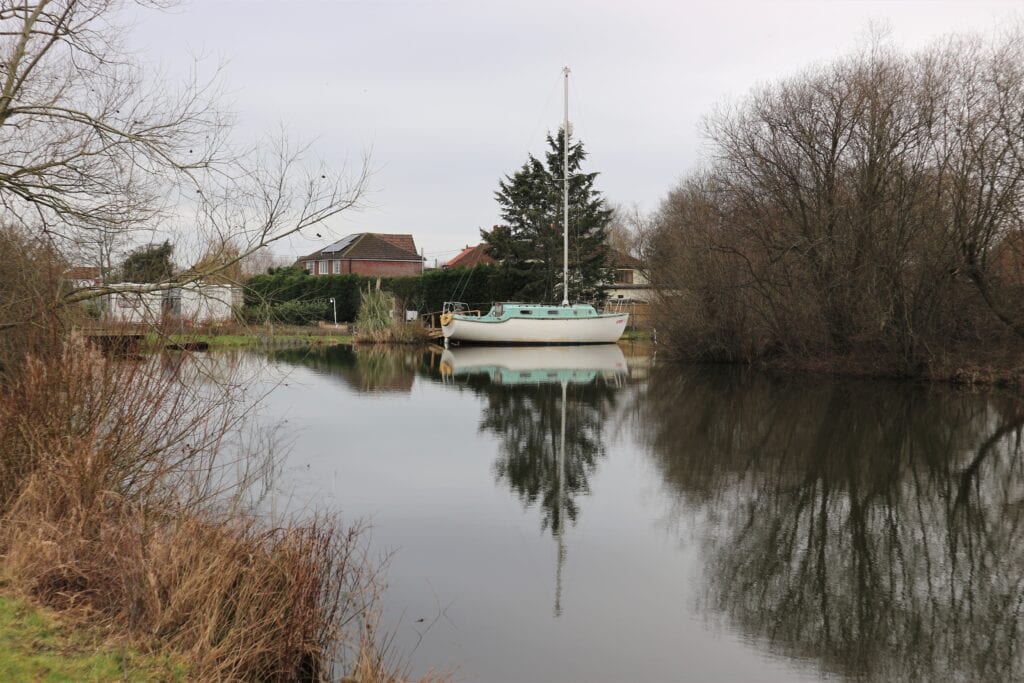

There are lots of interesting holiday complexes dotted around where I live, tucked away down country roads, where you wouldn’t normally find them unless tipped off they were there. Most have fish-filled lakes and I always enjoy exploring these places. The lake at Bainside House Coarse Fishery is such a venue. It has a long overgrown island down its middle, providing lots of feature swims, plus the River Bain running past on one side. The owner has a yacht moored up which, combined with the island feature, makes the water look more like a river than a long lake. Not knowing any hotspots, I picked a nice-looking peg where I could fish close to some overhanging cover on the island. I had been doing a lot of pole fishing this month and with no ice around, fancied a go on the waggler for a change. Apart from the usual suspects, apparently the place also holds chub and grass carp. That’s why I thought fishing against the island might be the best way to pull out a few surprises.
MICROS & CASTERS
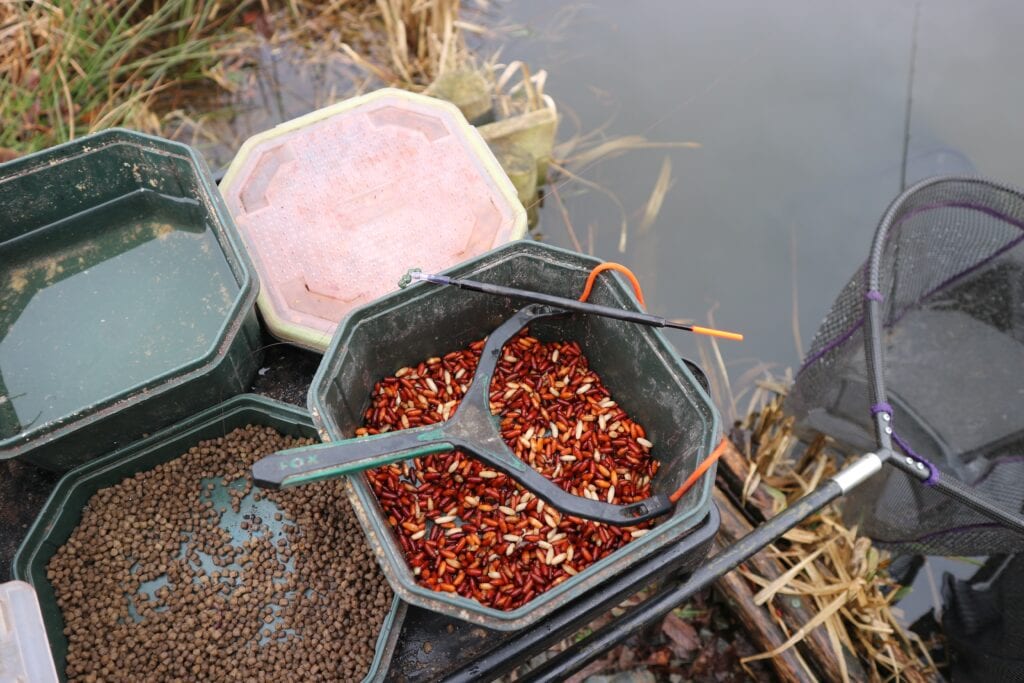

Hemp and casters used to be a favourite combination of mine for many years, but now pellets are fed just about everywhere, I sometimes use 2mm sinking expanders instead of seeds. Self-sinking expanders swell up to around 3mm after soaking, and silver fish, particularly skimmers, love them. My plan today was to simply feed casters with a catapult across to the island, while also pinging small amounts of micro pellets down the middle of the track, over to my left. That would give me a fallback option if the far bank line was slow going, or to give it a rest occasionally. As it turned out, I could have stayed with casting an insert waggler over to the island all day, because that area was solid with fish. But it was nice having a reserve pellet line, over which I could try several different hook baits to see what might turn up there. I missed a fast bite first cast across and then caught a quick flurry of hand-sized skimmers. A quick look over the pellet feed produced nothing.
CLIPPED UP
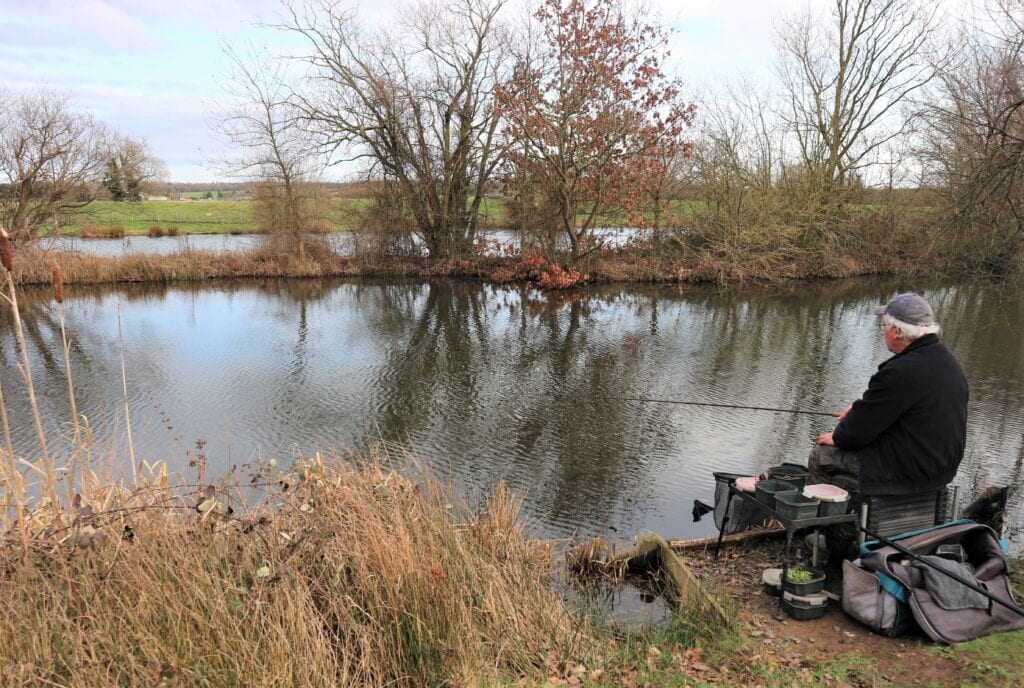

When I first started waggler fishing many years ago it was with Mitchell Match reels, which didn’t have line clips. I seem to remember hanging quite a few floats in the trees! That rarely happens these days because I can clip up with modern fixed-spool designs, much like you would do when feeder fishing. After a careful initial cast, I anchor the line and then start releasing a turn or two, until with further casting my insert waggler is landing much closer to any features. I can then wind it in a bit if I want to drop the rig deeper down the far shelf, but also explore tighter in if the fish back off. Plumbing up my second feed line over to the left – out in open water – had revealed a similar depth to what I had at the bottom of the far side shelf. The lake shallowed up there, leading into a bay. I only use a tiny piece of tungsten putty on the hook as a depth-finder with my wagglers, which is better than heavy plummets that tend to boomerang against the float’s locking shot.
FINDING SILVERS
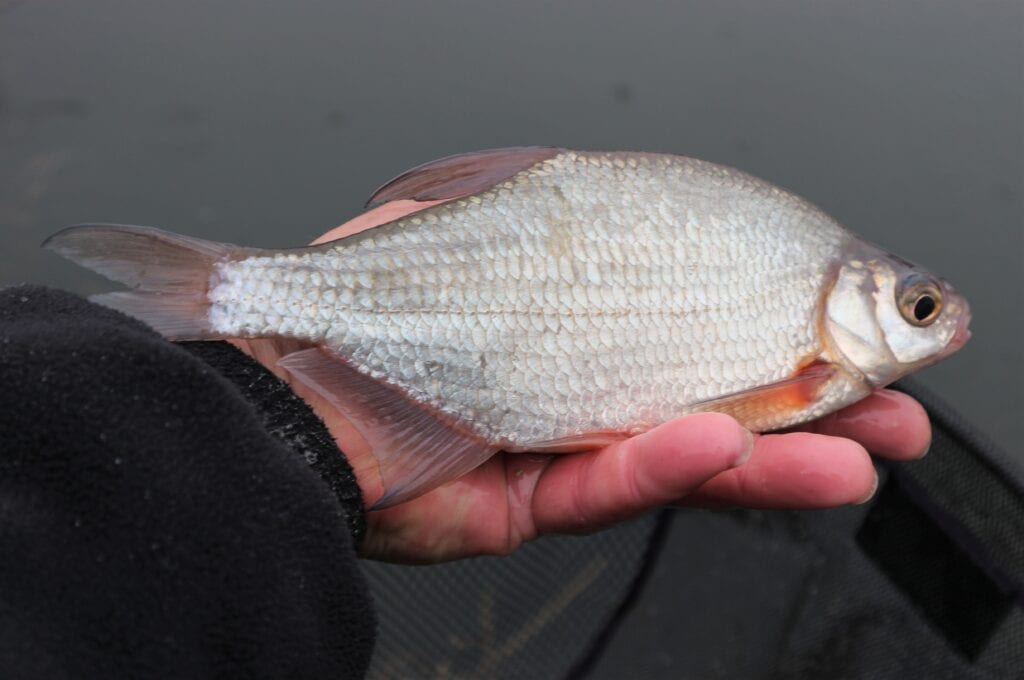

The skimmers kept coming on my caster feed line, even taking on the drop, which is unusual in the depths of winter. Gradually I began to realise that most of these fish were not proper skimmers but instead, I suspected, silver bream. They had much bigger than average eyes and a pinkish/orange tinge to their underside fins. They certainly looked very similar to the renowned silver bream I used to catch years ago on the venue where all the various records have been caught, Mill Farm Fishery in Sussex. These fish seemed a lot more active than normal skimmers, competing up in the water for regular loose feed. A few decent roach also butted in on the action, along with a rudd and a half-pound chub. I imagined there might be some fair-sized chub in this lake, being right next to the River Bain, which apparently produces this species and some big roach. I decided to give the far side a rest and try a 4mm pellet over my closer feed line. That brought a few proper skimmers up to 12oz.
BAGGING WATER
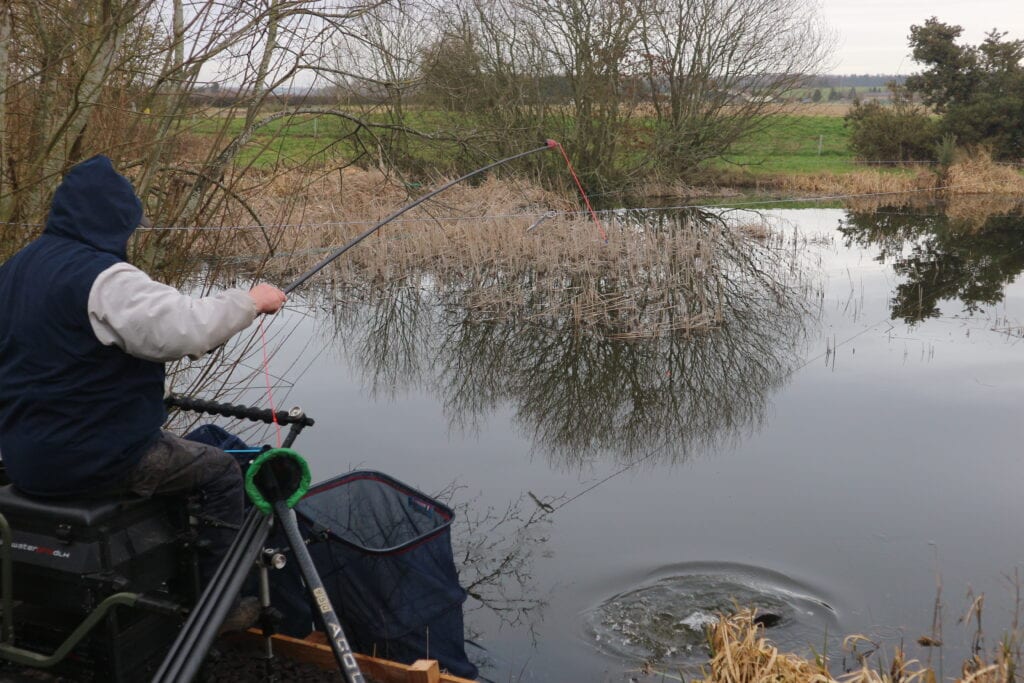

Although I was catching well, I decided to go for a walk to get a better idea what the lake was all about. The owner, Mick Saunders, was fishing down one end and had just latched into carp number 13 of his session, pole fishing close to a big bed of rushes. He reckoned to have well over 50lbs, while a couple of other regulars were doing well, saying the carp had only just started showing after the long cold snap. The other side of the island, to where I was fishing, was wider and more likely to be where any bigger bream might live. I noted there was an electric otter fence all around the lake, which must have cost a small fortune to instal. The River Bain that flows along the far side of the complex didn’t boast many features, having been dredged into what looked more like a flowing drain, with high grassy banks. I was told a couple of long glides had produced some 5lb-plus chub in the past, but information on this small river is sketchy, to say the least. I would have to plan another visit soon. There were not many other anglers about, so I returned to my swim.
TURNING THE CORNER
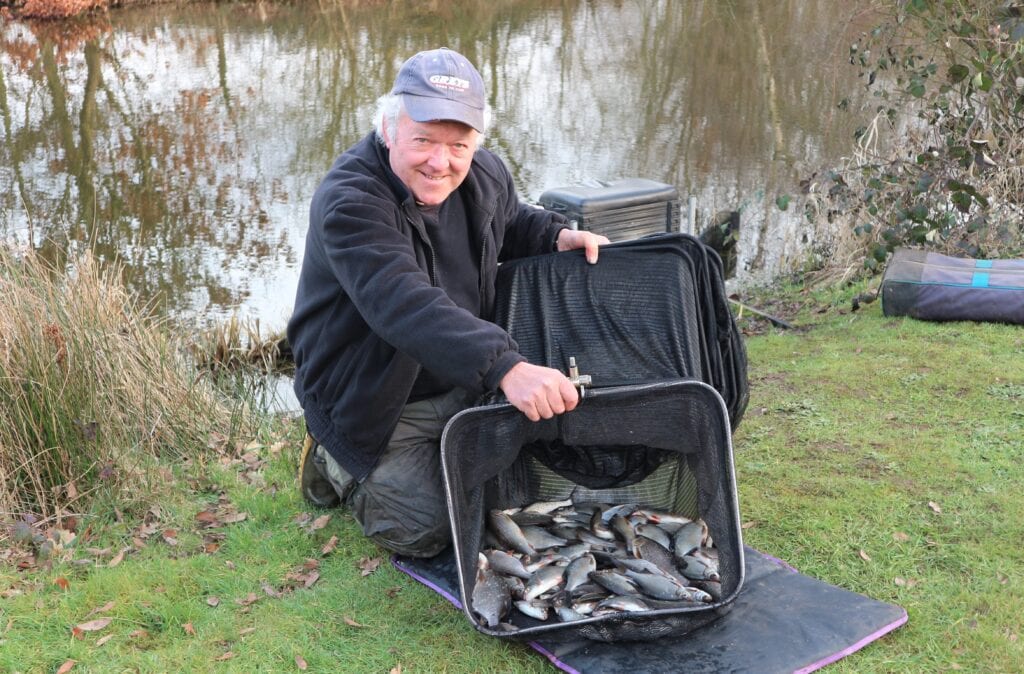

After such a long and severe winter, along with all the other problems that came with it, things were finally looking up. I wasn’t catching big fish, but plenty of reasonable silver bream, skimmers and roach, with most needing a landing net. I always enjoy busy sessions like this, especially since missing my match fishing for the past couple of months. I had a good waggler session like this on the Fossdyke Canal Winter League just before the latest lockdown, catching mainly caster roach on that occasion for a section win. The league had to be cancelled after that, when I was just getting to grips with the stretches being used. I certainly would have been happy with a catch like I amassed on this occasion, which must be around the 30lb mark. Most fish came from the island, which I fed quite heavily with casters in the end, trying to find more of the chub. But that tactic only made the silver bream feed more confidently. The closer pellet line never really happened, but was worth trying.










